45 Hours & Counting
Story By Trevor Hunter, Action Photos by RevD Photography/Cindy Lowerre
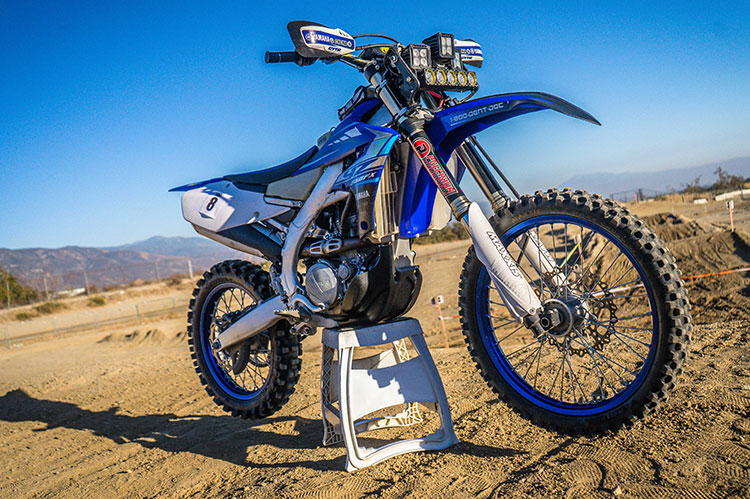
We have 45 hours and counting on our 2020 Yamaha YZ250FX and with no end in sight. Yamaha completely redesigned this bike for the 2020 model year, but it remains the same aside from BNG’s for 2021. Do we still have the same feelings as we did in our complete Bike Test a few months ago? Yep! The lighter feeling, more nimble chassis more closely resembles a moto bike in comparison to the previous generation bike, which is welcomed for the riding we are doing. Whether we’re riding across the desert at high speeds or through the trees at low speeds, we don’t feel the new bike is at a disadvantage handling wise. It’s more precise and nimble, yet still retains very good stability. Also, we love the newly integrated GYTR Power Tuner App with this bike. We can quickly change maps as we traverse different terrains, and with the quick-adjust map switch on the handlebars, we can alter between two different maps without missing a beat!
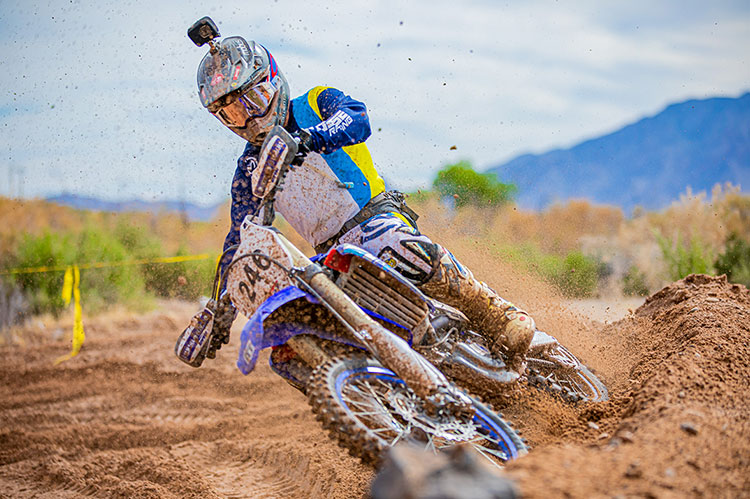
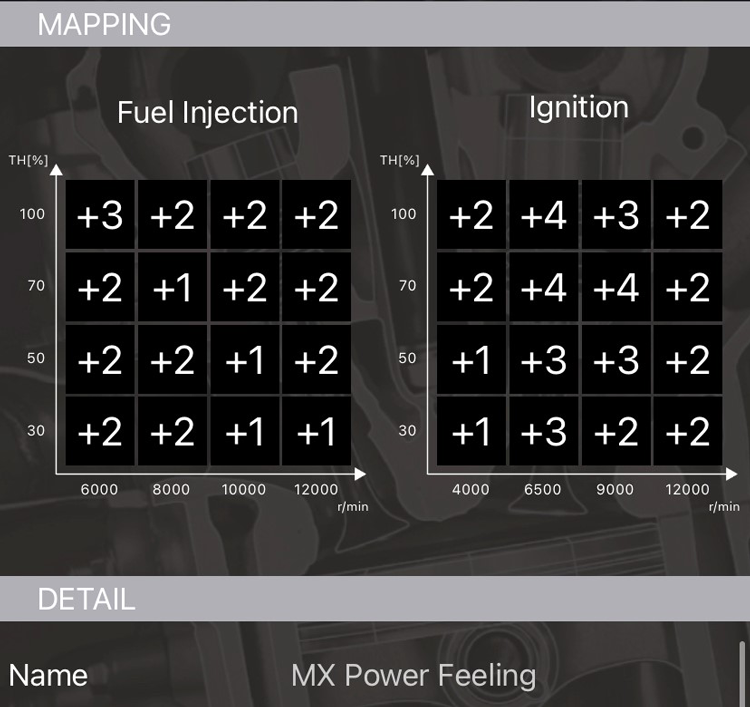
The suspension was one area where we felt there is room for improvement for our West Coast terrain. Stock, it’s on the softer side and struggles with faster riders on GP/moto tracks. We enlisted the help of Precision Concepts Racing, a local suspension company in SoCal to help us out. For years, they were in charge of the suspension for Johnny Campbell and the Honda squad in Baja when XR650R’s ruled the roost down South. Today, they run their own Kawasaki factory-supported effort in NGPC and WORCS with some of the fastest riders out West. They also take care of Yamaha’s West Coast Off-Road effort, the Purvines Racing Team, as they expand from Kawasaki specialists and into helping other elite-level teams and riders.

Initially, they gave us a setting that resembles Purvines Racing’s own Tyler Lynn’s setup, the reigning NGPC Pro 2 champion, and current WORCS Pro 2 Lights champion. Compared to stock, it lost some of that bottoming resistance that we’ve found the Yamaha’s to be so good at. It felt slightly firmer than stock for through the first ¾ of the stroke, but lost the edge in the last quarter. In stock trim, we were able to work around it being soft simply because it had such good bottoming. Additionally, the bike, and shock in particular, had a spike and rebound effect that didn’t leave us confidence-inspiring. To preface it, I tend to gravitate towards a moto-style/aggressive set up for off-road that features some “safety” for the bigger hits and bumps while sacrificing a little on the small chatter. What’s interesting is one of the fastest 250cc off-road riders in NGPC/WORCS racing runs this setup and wins quite often on the same tracks. But, it goes to show that everyone has a different taste when it comes to suspension.
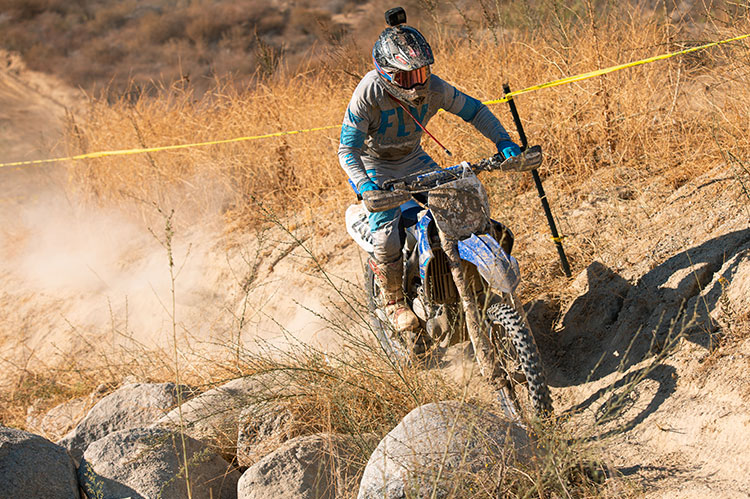
Since then, we’ve stiffened up both ends to where we are at currently. Now, it works well on a motocross track with enough dampening to take on big jumps and braking bumps, but it isn’t outstanding here. Where it really works well is in the smaller chop and acceleration bumps that you often find off-road. The softer setting soaks it up providing a planted feel that seems to find traction when there isn’t much. However, we still feel there is room for improvement to get a little closer to a stiffer MX setup. It still remains a little wallowy and a little too active using a lot of the stroke, though not necessarily bottoming. We’ve adjusted the clickers by stiffening up the compression on both ends and we’ve gotten it much closer to where we want it to be, though we don’t have much more room for adjustment. The question is where do we want to go with the setup from here? Right now, it works very well as a desert/SRA GP/Glen Helen Endurance Series bike. But, if we go NGPC racing, a slightly stiffer setup would be ideal. Over the last couple of months, we’ve raced the bike quite a few times using these settings at some WORCS races and SRA GP’s. Our highlights include a Top 10 in the WORCS Pro 2 Lights class and a couple of 250 Expert wins at SRA. We had hopes of running another DBT 24 Hours of Glen Helen effort, but school and some digital magazine thing became first priority…

How has the bike held up durability wise? For the most part, we haven’t had many issues with it. When we first took hold of the bike, we had some fuel-pump issues, though we blame that on a faulty mechanic (myself). We had zero issues until we tried switching to an IMS 2.8 Gal Tank for racing purposes. Somewhere in that transition, we messed up the fuel pump which caused the bike to quit running properly. Since then, Yamaha replaced the fuel pump and we’ve had no issues while utilizing the IMS tank for quite some time. The tank is a welcomed addition adding range to our rides without sacrificing much in the handling and cockpit. IMS puts almost all of the additional fuel at the bottom of the tank underneath the subframe. This helps keep the weight low while also minimizing any width gains in the shroud area. Since it is a dry-break setup, the cap area is raised higher than stock and the seat cover can’t protect it. You actually have to remove the little seat flap, then cut the main seat back a couple of inches. As a result, we find ourselves sitting on it from time to time, though it’s mainly when riding on an MX track. It isn’t a deal breaker by any means, and we’d rather have the dry-break and extra capacity than not for our purposes. Also, installation and removal of the tank are more difficult since it wraps around the subframe, but that isn’t something you have to do often so we can forgive that.

The only weak part we’ve found on the bike is the battery. Since the beginning, the bike has been hard to start, usually when hot. More often than not, it takes a constant 5-7 seconds of cranking over to get the bike to fire up after you stall or kill the motor right away. This is typical of E-Start Yamahas in our experience. If you wait a couple of minutes to restart the bike, it usually fires up instantly. Will a battery help resolve this? We’re testing to find out. We ran an SRA GP Night Race a few weeks back and with the light setup we had, we ended up killing the battery pretty quick. On the previous-gen bike, we had no issue with the bike producing enough power to support more power hungry lights than what we had installed on this setup. We also tested the bike in the garage the night before with a voltage meter and it held constant voltage at an idle, which is usually a sign that it’ll support the lights when you’re actually riding the bike with higher RPMs. But, we’ve learned through some connections who race down in Baja that the stock battery gets weaker as it heats up. This could explain the starting problem when you stall or kill/restart the bike right away and it takes longer vs when it’s colder. We just received a Fire Power battery to test to see if it helps with the starting and produces more constant power.
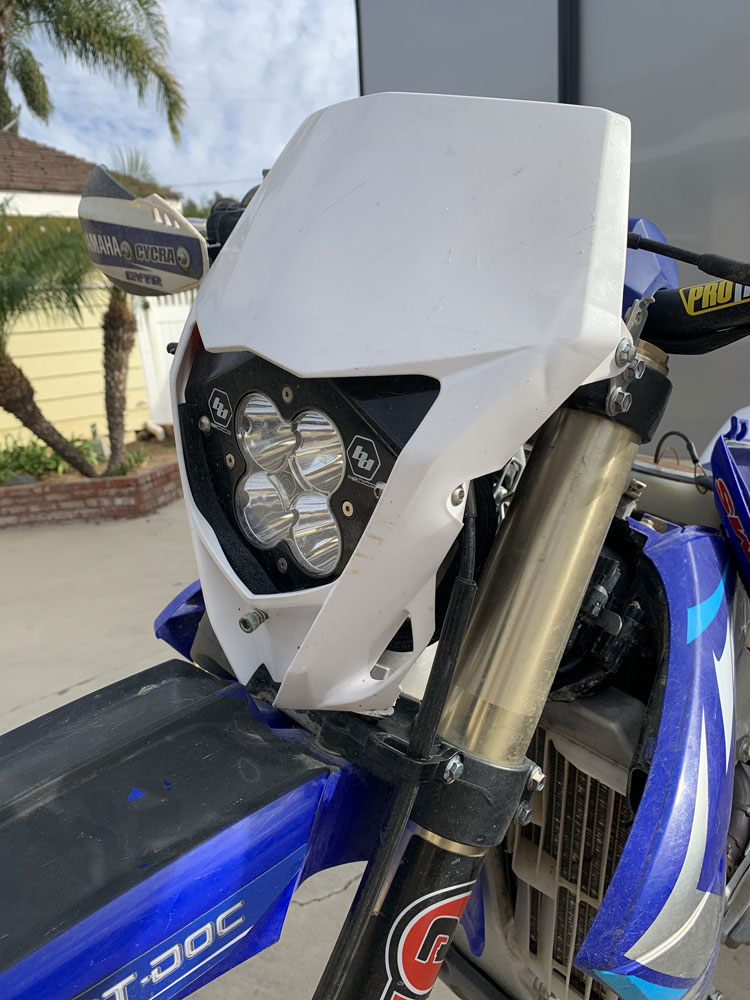
Additionally, we’ve installed a Baja Designs Squadron Pro to extend our riding capabilities into the dark! Since the bike is virtually the same as the WR model, everything bolts fairly easily and the bike has the power output to run a good headlight. Using the stock WR cowling, and the WR “clutch side” triple clamp mount on both the left/right side of the FX clamps, along with wiring it to run off the battery or stator, your bike is ready for night riding! Check the photos below to see how we set it up ~
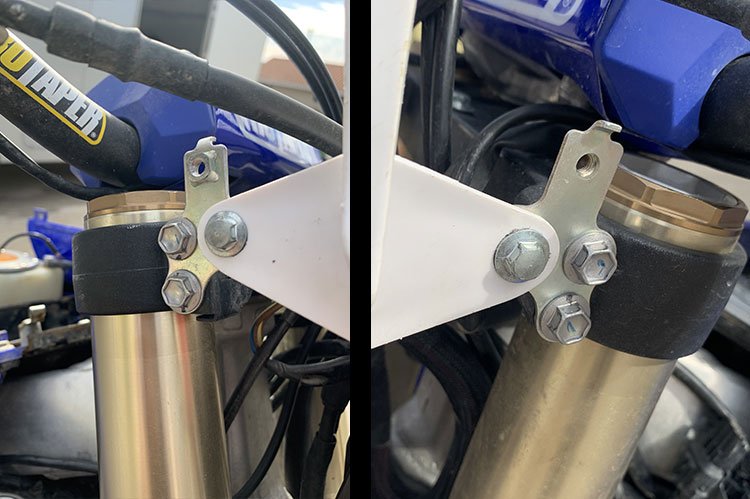
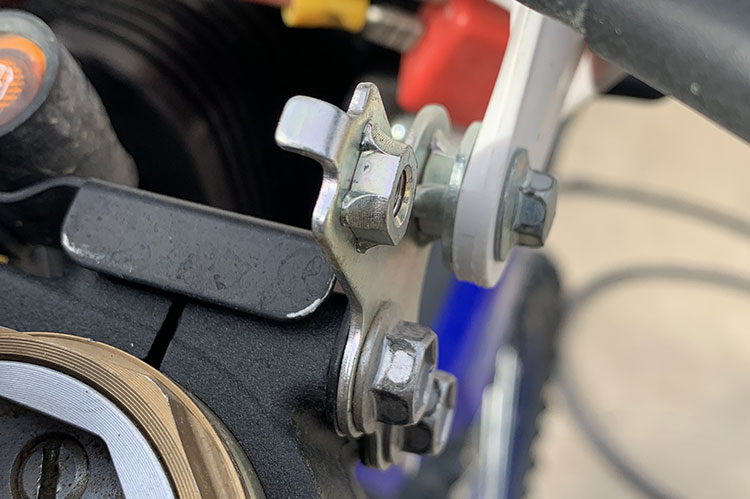
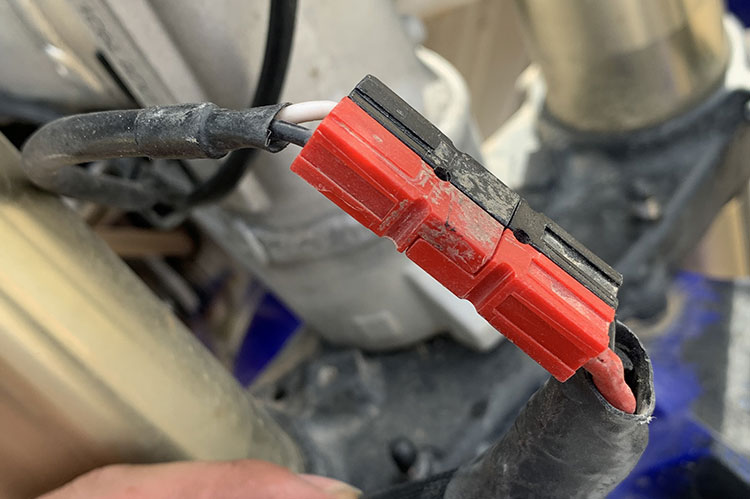
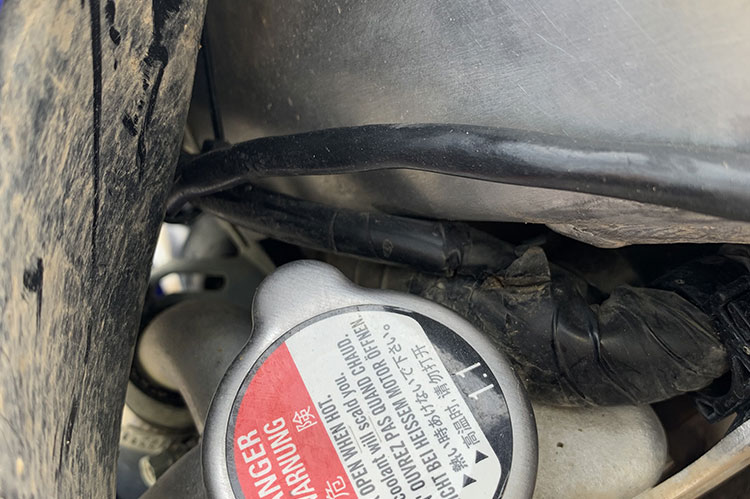
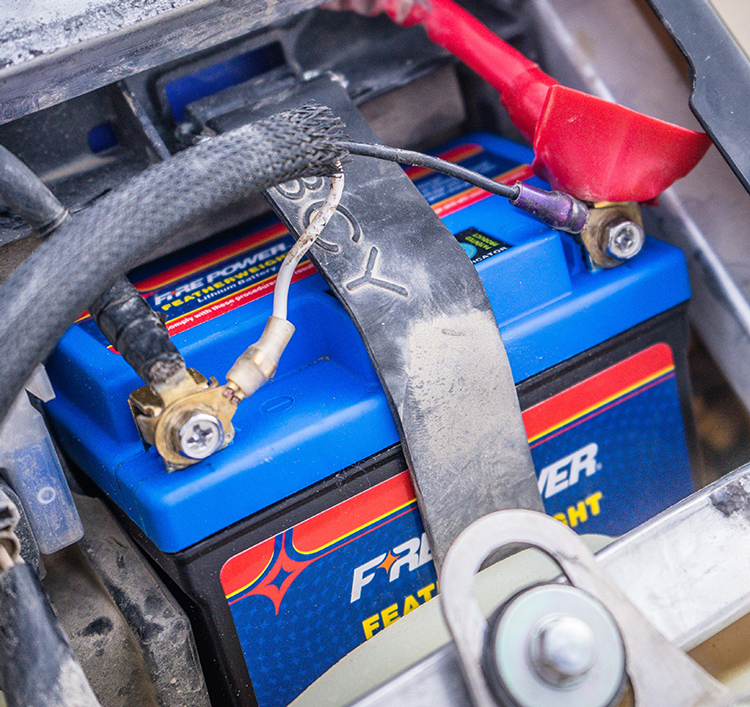
Here is a parts list, with the most important items bolded. In total, it retails for close to $75, not including the headlight itself.
- B7R-2831V-00-00 STAY (2)
- B7R-84330-00-00 BODY ASSY (1)
- 90480-12020-00 GROMMET (2)
- 90111-06127-00 BOLT, HEX. SOCKET BUTTON (2)
- 90387-06009-00 COLLAR (4)
- B7R-2331E-00-00 GUIDE, CABLE (1)
- 90105-05028-00 BOLT, FLANGE (1)
- 90105-06064-00 BOLT, FLANGE (2)
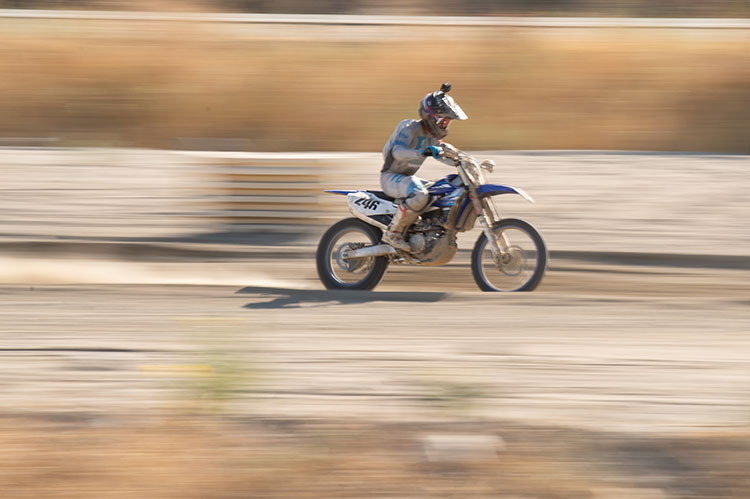 For the most part, our YZ250FX has been very reliable. We’re running 91 pump gas, Maxima ProPlus+ 10w50 oil, and change the oil every 6-8 hours with an oil filter every other ride. There have been no issues with the engine and it still runs as strong as ever. We’ve gone as far as 75+ hours on the original top end in the past, and we have no reason to doubt this powerplant either. We’ve also changed out the handlebars to a Pro Taper set. We’re running the EVO “Steering Damper Low” bend, even though we don’t have a stabilizer on the bike. Our riders range from 5’7 to 6’1 and they all like the bend as it helps with cornering and has an overall comfortable feel with its 69mm height. The stock bend is good, especially for more traditional off-road riding, but these bars transition better to motocross tracks. It’s worth mentioning that with a taller seat, the stock handlebars don’t feel quite as high. The stock seat height has a pocket that you sit in to, causing the bars to feel higher than they really are. On a side note, we’re a big fan of the stock grips for their shape and size. They are slightly on the firmer side, but give good grip and don’t tear our hands apart in long 1.5+ Hour races.
For the most part, our YZ250FX has been very reliable. We’re running 91 pump gas, Maxima ProPlus+ 10w50 oil, and change the oil every 6-8 hours with an oil filter every other ride. There have been no issues with the engine and it still runs as strong as ever. We’ve gone as far as 75+ hours on the original top end in the past, and we have no reason to doubt this powerplant either. We’ve also changed out the handlebars to a Pro Taper set. We’re running the EVO “Steering Damper Low” bend, even though we don’t have a stabilizer on the bike. Our riders range from 5’7 to 6’1 and they all like the bend as it helps with cornering and has an overall comfortable feel with its 69mm height. The stock bend is good, especially for more traditional off-road riding, but these bars transition better to motocross tracks. It’s worth mentioning that with a taller seat, the stock handlebars don’t feel quite as high. The stock seat height has a pocket that you sit in to, causing the bars to feel higher than they really are. On a side note, we’re a big fan of the stock grips for their shape and size. They are slightly on the firmer side, but give good grip and don’t tear our hands apart in long 1.5+ Hour races.
Overall, we’re very pleased with Yamaha’s YZ250FX. Every time we throw a leg over it, we put a smile on our faces. It’s very versatile, capable of riding Glen Helen’s main track one day, then tight singletrack or wide open desert the next. We’re looking to get an exhaust system to test, along with freshening up some of the wear items like Chain/Sprockets and a Slide-N-Guide Kit soon. But first, we’re headed to Lake Havasu, AZ for the AMA Big6 NGPC finale with our trusty YZ250FX in tow!
Support DBT, Shop and search for products through the link below:

